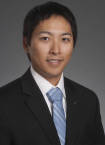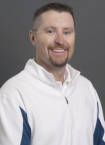Boise State University’s Athletic Training Student Association has created an educational video to enhance communication between athletic trainers and emergency medical services staff, such as paramedics and emergency medical technicians, when responding to a cervical spine emergency. The equipment worn in sports, such as football, can become a barrier to immediate care, such as CPR or using an automated external defibrillator. Techniques used to remove the equipment safely take a lot of practice to ensure the patient does not suffer further injury.

The need for such a video was identified after a cervical spine emergency at a local high school, when the athletic trainers at the high school asked Boise State’s Athletics and Athletic Training program if they had a video that would help facilitate communication between athletic trainers and emergency medical services staff that are stationed at high school football games. One of the Boise State athletic training students happened to be in a rotation with the high school’s athletic trainers when the emergency happened.

Marc Paul, assistant athletic director for sports medicine and head athletic trainer for Boise State’s Athletics Department, recommended this become a project for the Athletic Training Student Association. Students from the association worked to produce the video under the direction of Keita Shimada, assistant athletic trainer for Boise State’s Athletics Department and advisor for the Athletic Training Student Association. Former Athletics video services assistant Kelsey Siddoway assisted the student club in producing the video with Brenna Sweeney, an athletic training student, providing the narration.
“Managing cervical spine emergencies was a big topic at the last Idaho athletic training association annual meeting,” said David Hammons, director of the School of Allied Health Sciences Department of Kinesiology’s Athletic Training Program. “Usually athletic trainers establish a relationship with local EMS providers and this video, as a reference, can help shore up some the knowledge gaps that exist when it comes to caring for a head or cervical spine injured athlete that has football equipment on.”